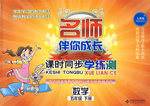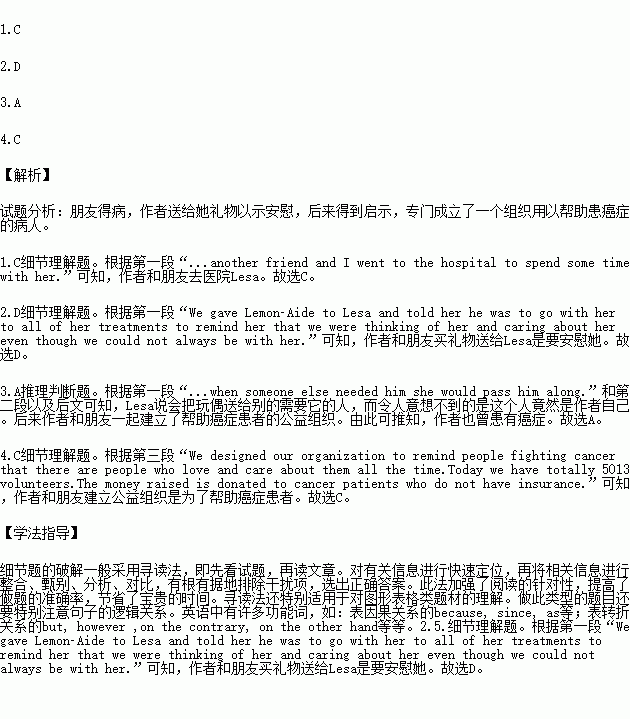题目内容
When my friend Lesa was diagnosed(诊断) with cancer, another friend and I went to the hospital to spend some time with her. We bought her a small toy and named him Lemon-Aide. We gave Lemon-Aide to Lesa and told her he was to go with her to all of her treatments to remind her that we were thinking of her and caring about her even though we could not always be with her. When the treatments were completed, she said when someone else needed him she would pass him along.
A few months later,much to my surprise, it was me that she passed him to. Lemon-Aide went with me to all of my treatments.
One day while waiting for my doctor I decided we could market the idea to fight cancer. Lesa thought it was a great idea so we founded the organization that came to be known as Lemon-Aide' s Friends, Inc. We designed our organization to remind people fighting cancer that there are people who love and care about them all the time. Today we have totally 5013 volunteers. The money raised is donated to cancer patients who do not have insurance. The physicians on our Board of Advisors determine how and where our money is donated.
Lemon-Aide is for men, women, and children of all ages and to date has been sent to 34 states and 33 countries to provide smiling support for people fighting cancer. When life gave us lemons we made Lemon-Aide, a soft smiling toy that represents love, support, and encouragement.
1.The author went to the hospital with her friend ________.
A.to operate on Lesa
B.to treat her disease
C.to accompany Lesa
D.to look after Lemon-Aide
2.Lesa was given a small toy because ________.
A.he represented her organization
B.he could help weaken her pain
C.she would think of her friends
D.her friends tried to comfort her
3.It can be inferred that ________.
A.the author had suffered from cancer
B.Lemon-Aide had suffered from cancer
C.Lesa had recovered from cancer
D.Lemon-Aide learned to look after the author
4.Lesa and the author formed an organization to ________.
A.cure cancer
B.raise money
C.help cancer patients
D.help their friend
 名师伴你成长课时同步学练测系列答案
名师伴你成长课时同步学练测系列答案
